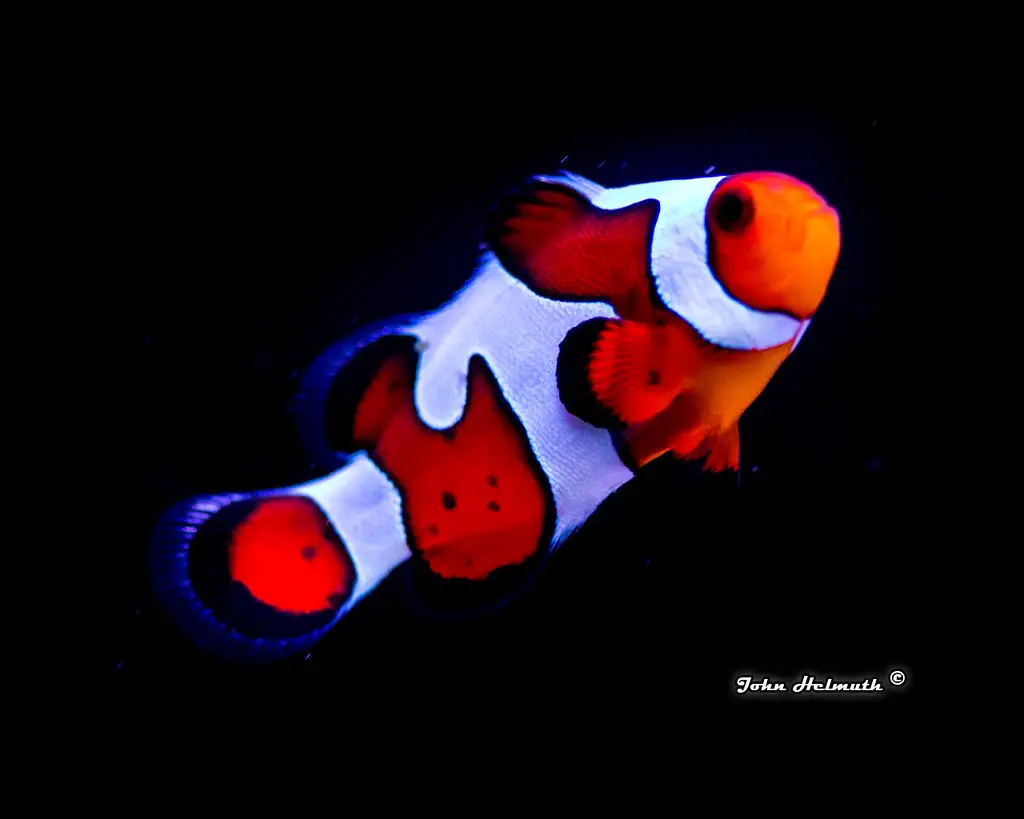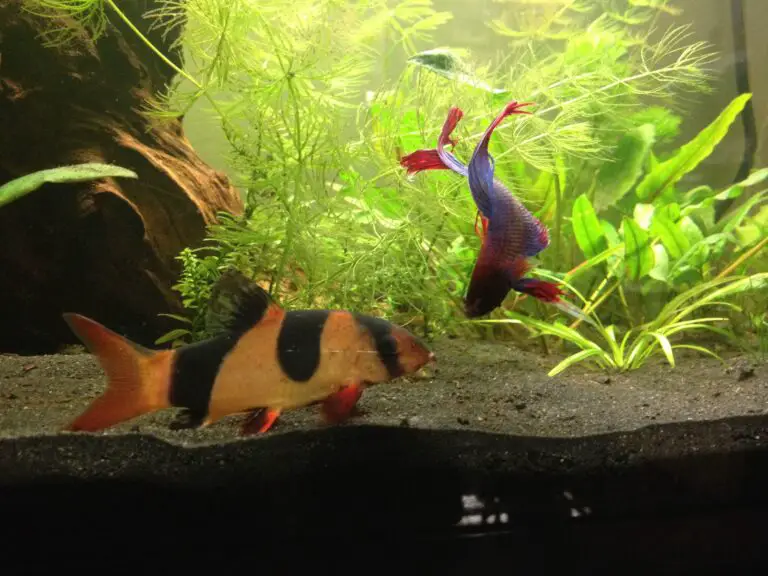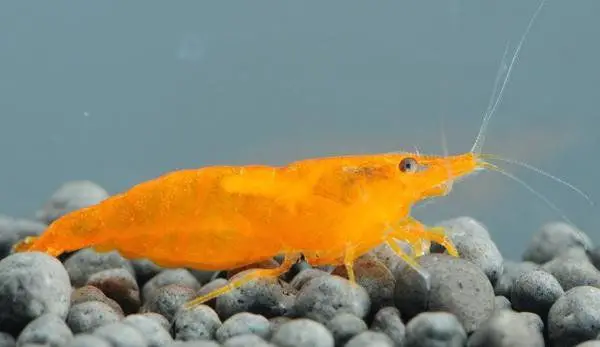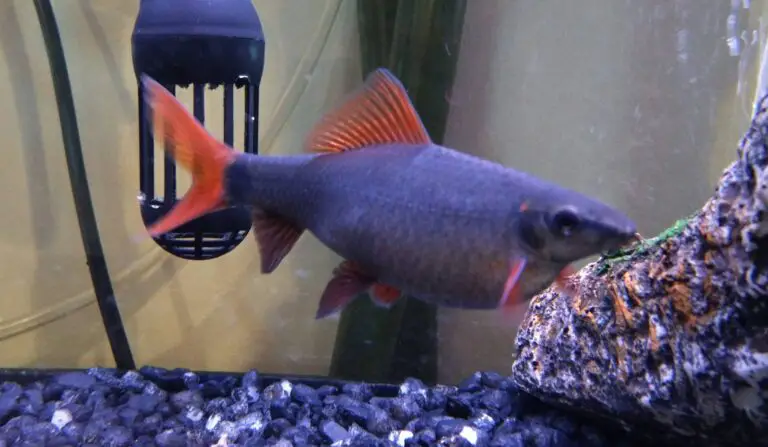Black Spots on Clownfish
Black spots on clownfish can be caused by a variety of factors. It is important to identify the cause in order to properly treat the condition. Common causes include disease, parasites, infection, or environmental stressors such as poor water quality or temperature fluctuations.
Disease-causing organisms such as bacterial and fungal infections can cause black spots on clownfish that may spread quickly if not treated promptly. Parasites are also known to feed off of clownfish flesh and leave dark lesions behind which could lead to black spots appearing over time. Poor water quality and sudden changes in temperature can result in black spot syndrome where multiple circular dots appear all over the body of the fish resulting in potential health issues down the road if not addressed promptly.
Ultimately it is important for aquarists to monitor their tanks closely and address any signs of illness immediately before it becomes a more serious issue with long-term implications for their pets’ health.
Clownfish are a beautiful and popular species of fish that many people have in their home aquariums. Unfortunately, they can be prone to developing black spots on their bodies which is caused by a condition known as “black spot disease”. This disease is usually caused by an infection from parasites or bacteria and it can cause the clownfish to become ill or die if not treated properly.
Fortunately, this disease can be treated with medications available at your local pet store. However, it’s important to keep your tank clean and avoid overcrowding so you can prevent black spot diseases from occurring in the first place.

Credit: www.nano-reef.com
What are the Black Spots on Ocellaris Clownfish?
Black spots on Ocellaris clownfish are actually natural markings specific to this species. These black spots, which can range from small flecks to large blotches, are actually melanophores – or pigment-containing cells that provide the fish with its characteristic coloration. The size and number of these melanophores vary between individuals and can even change over time as the fish grows.
In addition to providing camouflage in their native environment, the unique pattern of black spots makes it easy for aquarists to identify Ocellaris clownfish among other species in captivity.
How Do You Treat Black Ich on Clownfish?
When treating black ich (also known as saltwater ich or Marine Ich) on clownfish, the first step is to raise the temperature of your tank. This helps speed up the development cycle of the parasite which will help reduce its numbers faster. It is also important to do a water change before you start treatment so that any existing parasites in your aquarium are removed.
Once these steps have been done, it is time to add a medication like copper sulphate or formalin-based treatments to get rid of the parasites. Make sure you monitor and check all levels during treatment, especially nitrate and pH levels as they can be affected by medications used for treatment. After this, keep an eye on fish behaviour and health – if symptoms persist then consult with a veterinarian who will advise what further action needs to be taken.
How Do Fish Get Black Spot Disease?
Black spot disease, caused by the parasites Dactylogyrus and Gyrodactylus, is one of the most common diseases affecting fish. This type of parasite attaches itself to a fish’s skin and gills, causing irritation, inflammation and heavy mucous discharge. As time passes, more spots appear on the fish’s body until it is covered in them entirely.
The black spots are simply lesions due to damage inflicted by these parasites which occur when they attach themselves to a host for their own growth. In addition to causing physical damage from biting into the skin of its host, this type of parasite also extracts nutrients from them leading to further stress on the affected fish that can weaken its immune system making it vulnerable to other infections as well. It is highly contagious so if spotted early enough in an aquarium environment proper steps should be taken immediately like increasing water temperature or using medication such as copper sulfate or malachite green solution in order to kill off any existing parasites before they spread throughout an entire tank population.
What are the Black Specks on My Fish Head?
If you’ve noticed black specks on the head of your fish, it’s possible they could be parasites. Parasites are microscopic organisms that can infect a variety of marine creatures, and fish are particularly susceptible to them. While not all black specks are necessarily caused by parasites, it is important to determine what has caused this issue so that you can take the necessary steps to address it before any further health issues arise.
There are several ways in which you can identify whether or not these black specks on your fish’s head are actually parasites: Look for other signs such as white spots, raised bumps, or visible larvae; Check the water quality and make sure parameters like ammonia levels and pH balance remain within healthy ranges; Take a sample from the affected area and have your veterinarian examine it under a microscope; Treat with an anti-parasitic medication if needed. If none of these methods yield positive results in determining what is causing the black speckles on your fish’s head, then additional tests may need to be carried out to find out more about their source. It is always recommended that if you suspect something isn’t quite right with your fish’s health that they should be seen by an experienced veterinarian who will help them get back to being happy and healthy again!
clownfish black spots
Black Ich
Black Ich, also known as Black Spot Disease or Diplopstomiasis, is a parasitic infection caused by the dinoflagellate parasite called Diplopstomum that affects freshwater fish. It can cause lesions on the skin and gills of affected fish, leading to serious health issues or even death in severe cases. Treatment options include antibiotics and medications to reduce stress levels in affected fish.
Black Marine Ich
Black Marine Ich, scientifically known as Cryptocaryon irritans, is a common parasitic infection that affects marine fish. Symptoms of this disease include white spots or patches on the body and fins of affected fish. While Black Marine Ich can be fatal to some fish, it can often be treated with medication such as copper sulfate or formalin-based products.
It’s important to keep a close eye on your tank for signs of the parasite and treat infected fish promptly in order to prevent further spread.
Brown Spots on Clownfish
Clownfish are known for their bright colors and unique stripes, but some clownfish can develop brown spots as they age. This phenomenon is caused by a pigment change in the fish’s skin cells called melanin which darkens over time. Brown spots are completely normal on clownfish, and generally do not indicate any health problems or issues with water quality.
Clownfish Hyper-Melanization
Clownfish hyper-melanization is a natural process that occurs in clownfish and other marine species when they are exposed to stressful environmental conditions. This process causes an increase in melanin production, which can result in darker skin coloration. Clownfish may also experience changes in behavior as a result of this adaptation.
The purpose of this adaptation is believed to be for protection from predators as the increased dark pigmentation makes them more difficult to see against their surroundings.
Black Storm Clownfish
The Black Storm Clownfish (A. ocellaris) is a unique and striking species of clownfish that has an unmistakable black body with bright orange stripes. This fish is also known as the “Black Ocellaris” due to its resemblance to the common Ocellaris Clownfish. The Black Storm Clownfish prefers warm, shallow waters and can be found in areas such as Indonesia, Malaysia, and Australia.
These fish are hardy and easy to care for making them great candidates for beginner aquarists looking for a unique addition to their tank!
Hypermelinization
Hypermelanosis, or hypermelanization, is a condition in which the skin produces an excessive amount of melanin. This increased production of melanin can cause darkening and discoloration of the skin, as well as other adverse effects such as sun sensitivity and spots. It is most common in people with darker skin tones but it can also affect those with lighter complexions.
Hypermelanosis is generally caused by sun exposure, hormonal imbalances or certain medical conditions. Treatment for this condition typically involves using topical creams to reduce the amount of melanin produced by the body and lightening agents to even out any discolorations on the affected area.
Conclusion
In conclusion, black spots on clownfish can be caused by a variety of conditions, ranging from environmental stress to genetic defects. There is no single cause for these dark patches, and the underlying condition that causes them must be determined before any treatment can begin. Fortunately, with careful monitoring and proper husbandry techniques, most cases of black spots on clownfish are treatable and can resolve in time.






